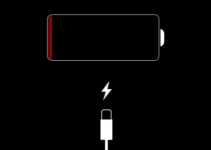Discovering iPhone Buyers’ Preferences for Storage Capacity. In the ever-evolving smartphone market, consumer preferences for storage capacity have emerged as a critical factor in purchasing decisions, particularly among iPhone users. A recent study focusing on consumer behavior has shed light on this trend, revealing that a significant portion of iPhone purchasers opt for higher storage tiers when upgrading their devices.
Revolutionizing Portable Computing: The Power and Innovation of Apple’s M4 Chip
The study indicates that nearly half of all iPhone buyers choose to increase their storage capacity when acquiring a new model. This trend is not only a reflection of growing data needs but also illustrates a savvy approach by Apple to boost profitability, as higher storage options generally carry better profit margins.
The increase in storage preference is especially pronounced with the latest iPhone 15 series. According to the data, about 50% of iPhone 15 buyers selected an upgraded storage option. This preference underscores the importance of storage in enhancing the overall user experience, accommodating more apps, photos, videos, and other content.
Interestingly, the propensity to opt for more storage varies significantly across different iPhone models. Buyers of newer and more expensive models, such as the iPhone 15 series introduced in September 2023, are more likely to choose enhanced storage capacities. This trend is markedly higher compared to those purchasing older or less expensive models.
For instance, more than half of the buyers of the newest models upgraded their storage, while this figure drops to less than 40% for the previous year’s iPhone 14 series. Furthermore, only about 30% of buyers of older models such as the iPhone 13 and iPhone 12 opted for increased storage.
This pattern suggests that individuals investing in the latest models are less sensitive to price increases associated with higher storage options. Conversely, those opting for older models are generally more budget-conscious, influencing their storage decisions.
The detailed analysis also differentiates between the standard and Pro versions of the iPhone 15. An impressive 54% of iPhone 15 Pro and Pro Max purchasers chose higher storage levels, compared to just 36% of those buying the iPhone 15 and 15 Plus models.
This significant disparity highlights the different consumer bases for Apple’s product lines. Pro model buyers, who are likely to use their devices for more intensive tasks such as video editing or high-end gaming, recognize the value of additional storage. In contrast, those opting for the standard models may prioritize cost over capacity.
Moreover, the trend extends beyond just practicality. It reflects a growing consumer awareness of the value of high-performance features that require more storage space, such as advanced applications and media capabilities.
In conclusion, the increasing preference for higher storage tiers among iPhone buyers is a clear indicator of changing consumer behaviors in the smartphone market. As applications and mobile technologies continue to evolve, requiring more storage space, this trend is only expected to grow. Therefore, manufacturers like Apple are likely to continue capitalizing on this trend by offering a range of storage options, catering to both high-end users and more price-sensitive consumers.



